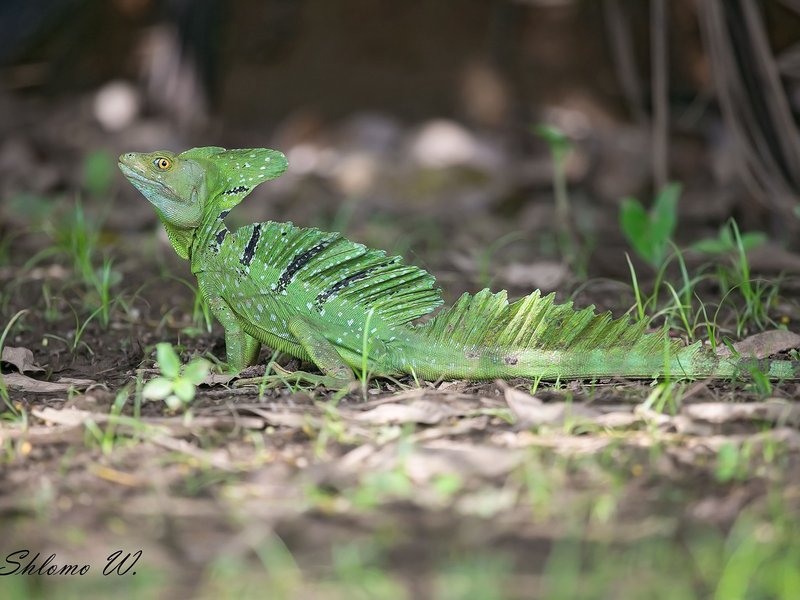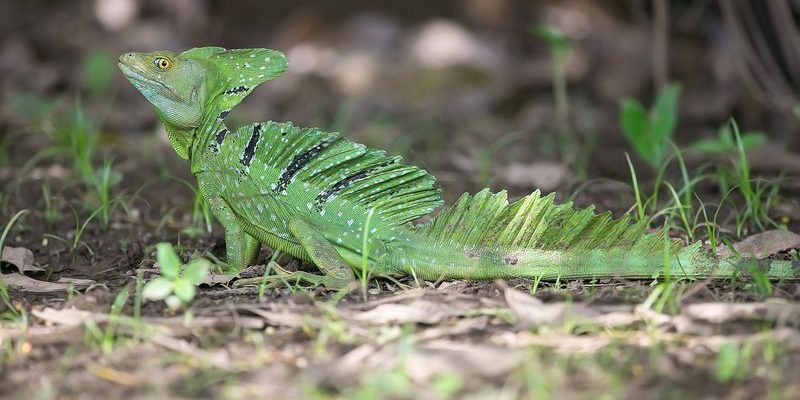
The basilisk lizard is not just a performer; it’s a survivor too. Originating from Central and South America, these reptiles thrive in lush environments where they can find abundant food and shelter. Like many creatures in the animal kingdom, understanding their breeding habits can help us appreciate their role in nature. So, grab a cup of coffee, and let’s dive into the captivating world of basilisk lizards.
Understanding Basilisk Lizards
Basilisk lizards belong to the genus *Basiliscus*, which includes several species, such as the common basilisk (*Basiliscus basiliscus*) and the yellow basilisk (*Basiliscus gelatinosus*). They are often referred to as “Jesus Christ lizards” for their ability to run across the water’s surface. This remarkable skill is just one aspect of what makes them so unique.
Physically, they are stunning creatures with bright green or yellow bodies, long tails, and distinctive dorsal crests. These characteristics not only help them in mating displays but also in camouflage against predators in their rainforest habitats. But there’s much more beneath the surface! Their reproductive behaviors are just as colorful and complex.
Mating Rituals of the Basilisk Lizard
When it comes to attracting a mate, basilisk lizards engage in a series of impressive courtship displays. Males are particularly flashy, using their striking colors and physical attributes to entice females. Picture a colorful dance, where the male puffs up and flaunts his vibrant scales, all the while bobbing his head to showcase his fitness.
These display rituals generally begin with a chase. If a female is interested, she might engage by flicking her tongue or making herself more visible. Here’s the thing: the courtship is not just about looks; it’s about compatibility. Males will compete for the attention of females, sometimes wrestling to demonstrate their strength and vigor. This competition helps ensure that the strongest genes are passed on to future generations.
Nesting Habits
Once a couple has successfully mated, the next phase begins—nesting. Female basilisk lizards are quite particular about where they lay their eggs. They often choose secluded spots with soft, sandy soil for optimal egg incubation. This choice isn’t just random; it’s a matter of survival for the young hatchlings.
Typically, a female can lay anywhere from 10 to 20 eggs in a single clutch. After laying her eggs, she buries them carefully to protect against predators. It’s a bit like a mother hen hiding her chicks; the less attention drawn to the eggs, the better their chances are of hatching safely.
Incubation Period
The incubation period for basilisk eggs usually lasts about 60 days. During this time, the eggs need a stable environment to develop properly. Too much disturbance or unfavorable temperatures can lead to unsuccessful hatching.
Interestingly, the temperature at which the eggs incubate can influence the sex of the hatchlings. Warmer temperatures may produce more males, while cooler conditions may lead to more females. This phenomenon highlights how environmental factors play a role in the population dynamics of the species, potentially shaping the future of the basilisk lizard.
Caring for the Young
Once the eggs hatch, the tiny basilisk lizards are on their own right from the start. These hatchlings emerge fully formed and ready to face the world. They have to quickly learn to fend for themselves, which includes avoiding predators and finding food. It may sound a bit harsh, but it’s a tough world out there.
The young lizards instinctively know how to climb and run, making their way to nearby vegetation for protection. Their vibrant coloration helps them blend into their surroundings, reducing the risk of becoming a meal for larger animals. It’s a survival of the fittest scenario from day one.
Challenges and Threats
Like many species, basilisk lizards face several threats in the wild. Habitat destruction due to deforestation and climate change is a significant challenge. These environmental changes can affect their breeding habitats and food sources, making it harder for them to thrive.
Predators, such as birds and snakes, pose additional risks, especially to the young. As clever as they are, basilisk lizards are still vulnerable during their early stages of life. Conservation efforts are crucial to help protect their habitats and ensure that future generations have a fighting chance.
The breeding and reproductive behavior of the basilisk lizard are just one piece of the puzzle that makes these reptiles so captivating. From their elaborate mating dances to the challenges of raising young, each aspect plays an essential role in their survival. As we learn more about these incredible creatures, we can better appreciate the complexities of their lives.
While they might seem like just another lizard, the basilisk has much to teach us about resilience and adaptation. So, the next time you encounter a basilisk lizard or hear about their fascinating habits, remember the vibrant life they lead and the story behind their survival in the wild.

